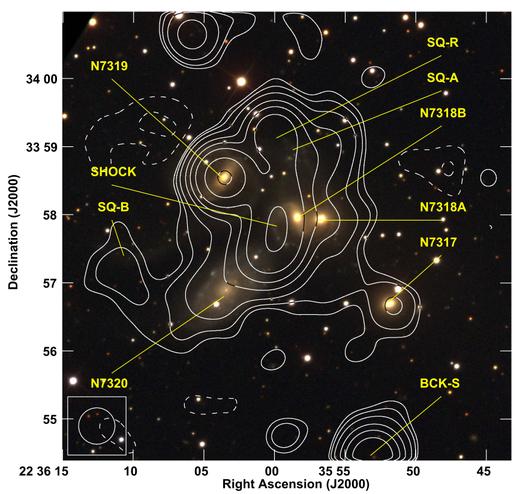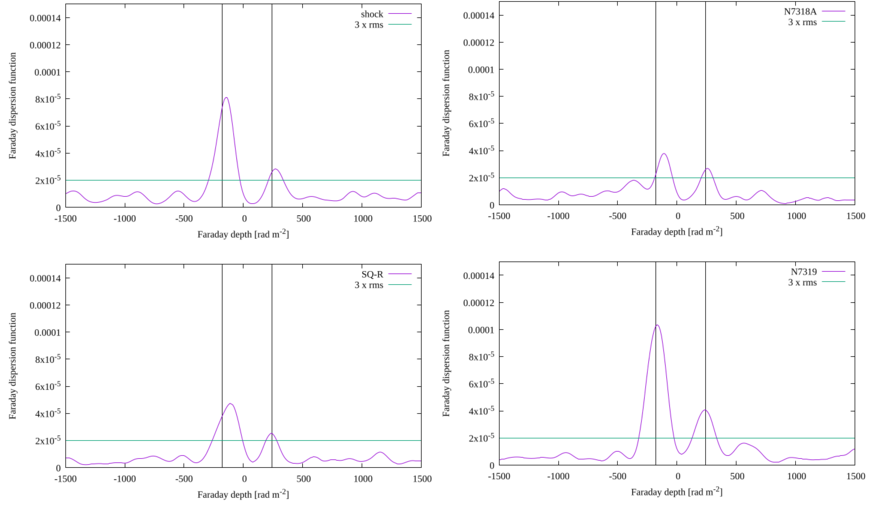Astronomy Object of the Month: 2020, September
< previous Archive next >
The most widespread, regular magnetic field in the Universe
Magnetic field in the Space is nothing weird:
its presence is detected on small, rocky planets, as well as in haloes enshrouding
galaxy clusters
that extend on millions of light years. Not only is this entity common,
but it’s also extremely important: while invisible to the naked eye, it is the magnetic field that has a dramatic
impact on the galactic evolution, gives an onset – or the opposite, blocks! – stellar formation, or “keeps in line” charged particles ejected in the quasars’ jets. Our knowledge
of magnetic fields and their properties, despite being constantly broadened, still is relatively poor – in particular,
when it comes to the structure of the Galactic magnetic field, or prospects for the further magnetisation of the
seemingly empty space by objects already magnetised.

Cosmic magnetic field can be either regular, ordered, or chaotic. The last form is the most widespread one, without any preferred orientation. Such a field can encompass large areas, creating a form of a magnetic soup, in which particular galaxies, or even systems of them, are soaked. The ordered one is relatively rarer: they appear to have a preferred direction, but in fact the sign of the field can actually change from “+” to “-”; they are created when chaotic fields are squeezed, or stretched during galactic interactions. These fields can also grow vast: arch-like relics found in galaxy clusters are frequently as large as hundreds of thousands of kilometres. The least common one is the genuinely regular, unidirectional field. Creation of such an entity is not an easy task: usually the magneto-hydrodynamic dynamo has to take action. This one works effectively only for a small fraction of galaxies, mostly spiral ones (although not all of them; on the other hands, some of the irregulars can utilise it, too).
A field created in such a way is hosted in the galactic disk, and can exit it only by the means of tearing the gas (into which it is frozen) away from the original location during some interactions, e.g. between galaxies. Outside of the disk, however, the subtle regular structure of the field does easily deteriorate; henceforth, the only regularly magnetised structures found outside of galactic disks are narrow, elongated spiral arms. And even if they reach tens of thousands of light years of length, their width, or depth is not longer than a few thousands light years. Same applies to the tails created when matter is being expelled from the disks because of the supernovae feedback: this process does not create large intergalactic, regularly magnetised structures.
A team of scientists from the Jagiellonian University and CSIRO in Australia has just published an article that describes a vast, regularly magnetised structure found in a small, compact galaxy group – the Stephan’s Quintet. This object is believed to be a model one for its class; galaxies that form it interact with each other, expelling the matter to the intra-group space, or even outside of it. Analysis of the regular magnetic field was done with the Rotation Measure Synthesis method that focuses on how does the polarisation angle vary in a broad, densely sampled fragment of the radio spectrum. A change in the angle means that the plane of polarisation of the incoming wave has changed – it happens in the presence of a regular magnetic field along the line of sight (Faraday’s effect). Observations of the Quintet show that those radio sources that are inside the group, or shine through it, are immersed in one, consistent, regularly magnetised structure. Studies suggest that it is nearly impossible to explain the picture observed if that structure is placed inside our own Galaxy; that would contradict all known models of its magnetic field structure. Therefore, the only place where this structure can be located, is the vicinity of the Quintet. It seems that we are facing some kind of a magnetic „screen”, with an extent of at least 200 000 on 130 000 on 65 000 light years. It is the largest known, regularly magnetised structure in the Universe, and the one and only object of this type found not in a single galaxy, or a galaxy pair. Moreover, there is no consensus on how was this structure created. While the most probable explanation is that it was torn from one of the member galaxies, it is hard to imagine the sequence of events that could led to a formation of such a vast entity.
An answer to these questions might possibly be revealed thanks to the already planned revisiting of the Quintet: thanks to the data from other instruments (including those from LOFAR, the state-of-the-art, Pan-European low frequency interferometer, to which a significant contribution is made by three Polish-owned stations), it will be possible to study the traces of the regular mangetic field in a much more detailed way. In particular, it might happen that either the source, or any hints on the nature of unexpected, magnetic “screen” will be found.

Original publication: Błażej Nikiel-Wroczyński, Marian Soida, George Heald, Marek Urbanik, A Large-scale, Regular Intergalactic Magnetic Field Associated with Stephan's Quintet? , ApJ, 2020, 898, 110.
The research was conducted at the Department of Radioastronomy and Space Physics of the Jagiellonian University’s Astronomical Observatory (OA UJ). The work was supported by the Polish National Science Centre through the grant UMO-2013/09/N/ST9/02532.
|
Błażej Nikiel-Wroczyński Astronomical Observatory Jagiellonian University B.Nikiel_Wroczynski [at] oa.uj.edu.pl |


